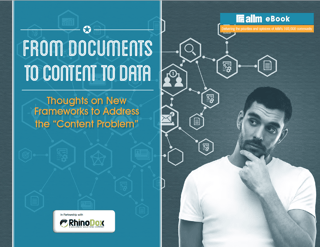
Since the 1980s, relational databases have been used to store business information. They were a huge step forward over hierarchical databases, which organized data into rigid tree-like structures with connections between data elements defined by the links in the structures.
Relational databases typically store information in rows and columns in tables, with column names providing the linkages between tables. The relational model works terrifically well within a particular database, but can create challenges across databases, particularly at scale when linking vast volumes of data with inconsistent naming conventions.
For over two decades, the disciplines of content management and data management have existed in somewhat parallel universes. This disconnect has manifested itself in a lack of integration between data-centric business systems and ECM systems.
Download this new e-book exploring the connections between documents and content and data.